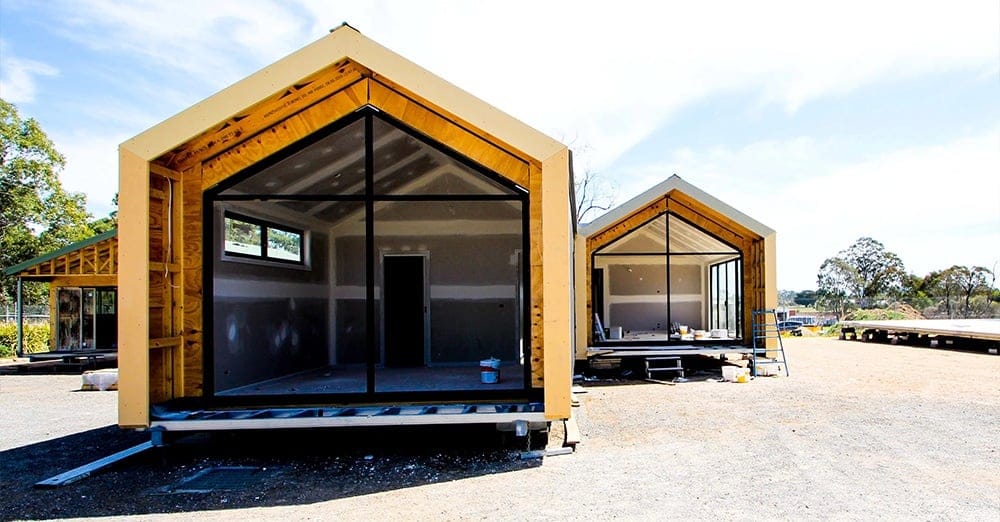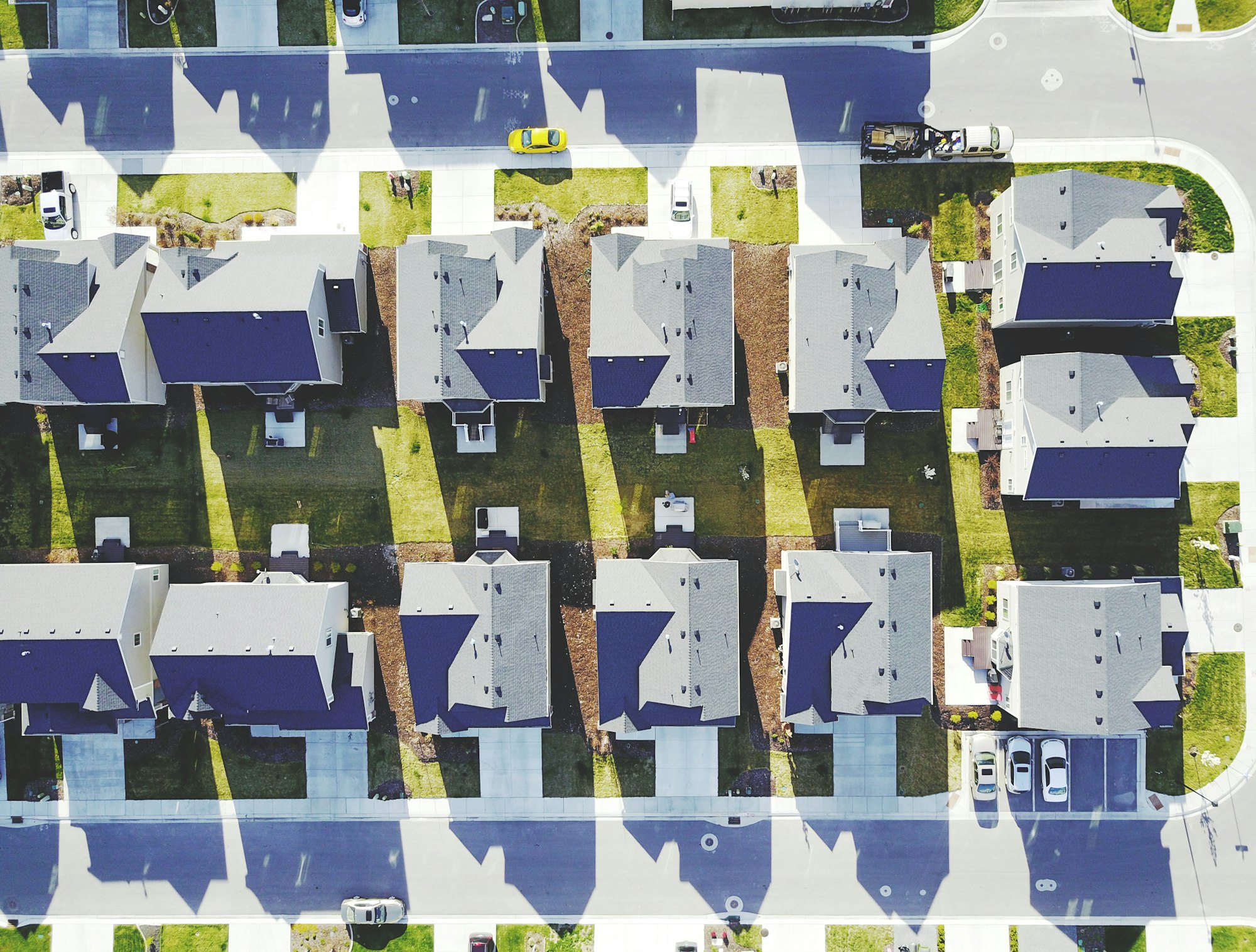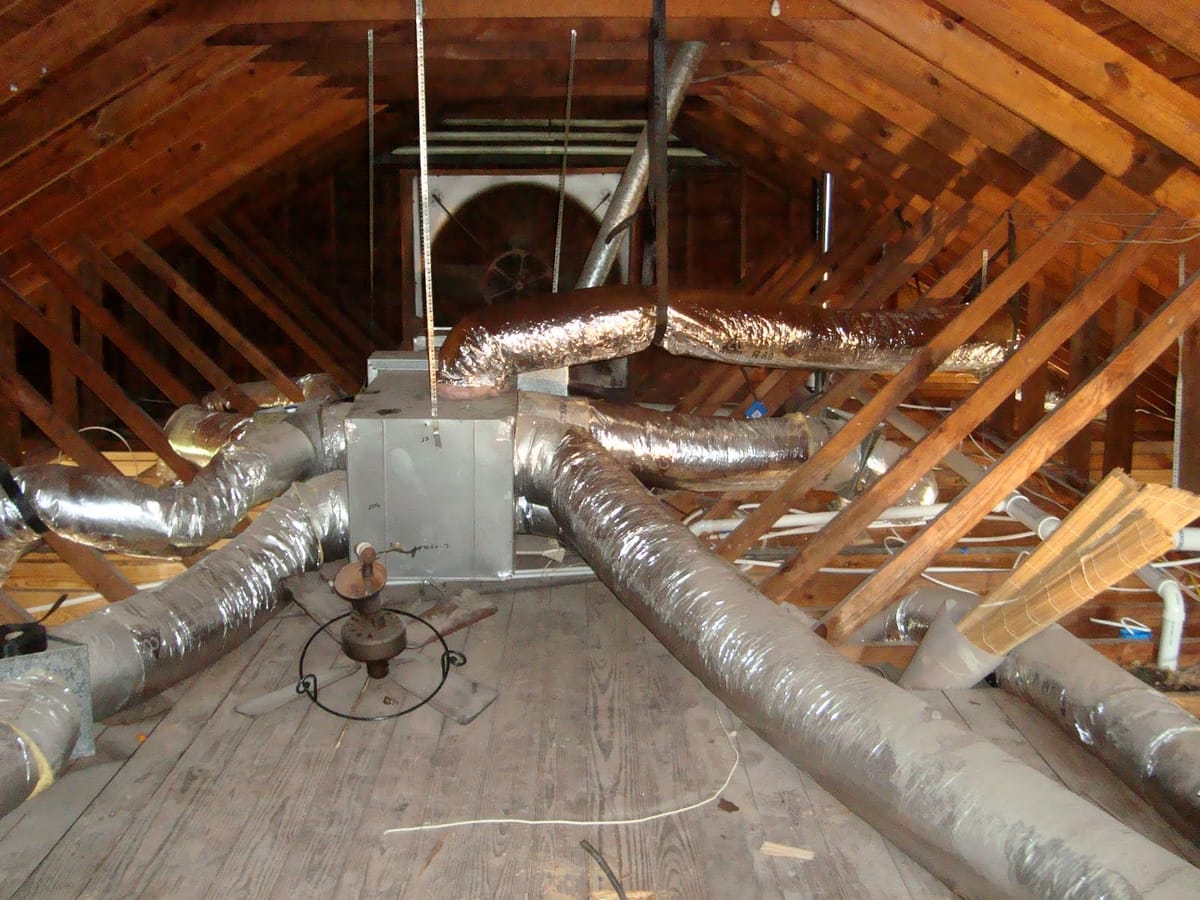Introduction
Waste in residential construction not only leads to higher costs but also contributes to defects, delays, and poor build quality. Many homeowners are unaware that inefficiencies in construction processes often result in substandard outcomes.
By adopting lean construction principles, specifically Mura (unevenness), Muri (overburden), and Muda (waste), builders can significantly improve the quality and efficiency of their projects.
These concepts, originally developed in Japanese manufacturing, have become increasingly relevant in the construction industry.
In this article, we will explore how addressing Mura, Muri, and Muda can reduce waste, align construction processes with company goals, and create better homes for Australian homeowners.
What are Mura, Muri, and Muda?
Mura (Unevenness)
Mura, meaning unevenness or inconsistency, refers to fluctuations in work processes that cause inefficiencies.
In lean manufacturing, it's important to maintain consistent flow and minimise variability to ensure high-quality outputs. When processes vary, quality suffers, leading to defects and waste. Mura applies to both physical and operational aspects of the construction process.
In Residential Construction: In residential construction, Mura often manifests as inconsistent work schedules, fluctuating material supplies, or irregular labour allocation. For example, if builders don't receive materials on time, their workflow is disrupted.
This inconsistency can delay the entire project and increase costs due to wasted labour and rescheduling. Similarly, poorly planned projects may cause certain trades (like electricians or plumbers) to work too early or too late in the process, creating bottlenecks and reducing efficiency.
Key Takeaways:
- Mura increases the likelihood of mistakes and rework, as inconsistencies lead to confusion and poor execution.
- Consistent scheduling and resource allocation ensure smoother workflow and reduce costly delays.
Muri (Overburden)
Muri refers to overburdening workers, equipment, or materials beyond their capacity.
This leads to burnout, breakdowns, and inefficiency, causing unnecessary stress on resources. Overworking people and tools can result in mistakes, equipment damage, or accidents, which are all forms of waste.
In Residential Construction: Muri can be seen when teams are pushed to meet unrealistic deadlines or when workers are expected to perform tasks without the necessary tools or support. For example, overloading a team of carpenters with excessive tasks in a single day may cause them to rush through their work, leading to errors such as incorrect framing or poor-quality finishes. Additionally, overusing equipment without proper maintenance increases the likelihood of breakdowns, further delaying the project.
Key Takeaways:
- Muri reduces the quality of work, leading to rework, defects, and project delays.
- Proper resource management, clear timelines, and regular equipment maintenance are essential to avoid overburden.
Muda (Waste)
Muda is the Japanese word for waste, and it encompasses anything that does not add value to the final product.
In lean construction, the focus is on identifying and eliminating waste in all its forms to streamline the process and improve quality. There are seven types of Muda commonly identified in lean practices:
- Defects: Errors in construction that require rework or repairs.
- Overproduction: Building more than what is needed, such as ordering too much material.
- Waiting: Delays caused by waiting for materials, equipment, or approvals.
- Non-utilised Talent: Under-utilising the skills and expertise of workers.
- Transportation: Unnecessary movement of materials or equipment around the job site.
- Inventory: Excess materials that aren't immediately needed, which can lead to storage issues and waste.
- Motion: Inefficient movement of workers that doesn't contribute to the construction process.
- Extra-Processing: Doing more work than is necessary, such as applying more finishes than required.
In Residential Construction: A typical example of Muda in residential construction is over ordering materials like timber or bricks, which not only increases costs but also creates waste if those materials are left unused. Similarly, defects in construction, such as poor plumbing installation, result in rework, which adds both time and cost to the project. Long wait times for inspections or approvals also create idle periods, leading to extended project timelines.
Key Takeaways:
- Identifying and eliminating Muda improves efficiency, reduces costs, and ensures projects stay on schedule.
- Builders should focus on streamlining processes and using resources efficiently to minimise waste.
Why are Mura, Muri, and Muda Relevant to Residential Construction?
Impact on Homeowners
Understanding how Mura, Muri, and Muda impact residential construction can help you make more informed decisions. Eliminating waste not only reduces construction costs but also enhances the quality of the final product.
Defects caused by poor planning or rushed work increase the likelihood of costly repairs and maintenance down the road.
How Does It Affect Homeowners Directly?
For home owners, waste in the construction process can lead to significant financial and emotional stress. For example, poor quality control resulting from Mura (uneven planning) may lead to defects like uneven flooring or cracks in walls due to inconsistent material usage or rushed work. Such defects require rework, often at the home owner's expense, and extend the time it takes to complete the build.
The potential for disputes over timelines and quality can also lead to legal battles between home owners and builders.
Impact on Builders
For builders, the application of Mura, Muri, and Muda in their construction processes directly affects their profitability, reputation, and ability to deliver projects on time.
By minimising waste and overburden (Muri), builders can ensure a smoother workflow, reducing the likelihood of project delays or defects that can erode profit margins.
Why Should Builders Care?
Builders who fail to address these wasteful practices are more likely to face:
- Rework and defects: Poorly executed work requires corrections that consume time and resources.
- Reputation damage: Homeowners unhappy with defects or delayed projects can harm a builder’s reputation through negative reviews and word-of-mouth.
- Increased project costs: Over-ordering materials (Muda) or overworking teams (Muri) can inflate project costs, reducing profitability.
Addressing these wasteful practices helps align a builder’s work with their company goals by improving quality, maintaining profitability, and enhancing customer satisfaction. Furthermore, builders who implement lean practices create more efficient workflows, leading to higher-quality outcomes and faster project completion times.
Alignment with Australian Regulations and Standards
In Australia, compliance with regulations such as the National Construction Code (NCC) and Australian Standards is mandatory for residential construction projects. These standards aim to ensure that buildings are safe, durable, and meet environmental efficiency requirements.
How Lean Practices Support Compliance:
- Mura: Minimising variability in materials and processes ensures more consistent compliance with quality and safety standards.
- Muri: Avoiding overburdening workers helps maintain safety and ensures that tradespeople have the time and resources to meet regulatory requirements.
- Muda: By reducing waste, builders not only lower costs but also ensure that construction practices align with sustainable building requirements, which are increasingly mandated by Australian regulations.
Key Takeaways:
- For homeowners, eliminating waste in construction leads to fewer defects, quicker builds, and less long-term maintenance.
- Builders benefit by improving profitability, reducing the risk of rework, and delivering projects on time.
- The alignment of lean construction principles with Australian regulations ensures that homes are built to higher standards and comply with sustainability and safety requirements.
How Builders Can Use Mura, Muri, and Muda to Improve Quality
Implementing Mura: Reducing Variability
Variability in construction processes—whether due to inconsistent materials, labour scheduling, or design changes—leads to inefficiency, errors, and higher costs. By addressing Mura, builders can create more predictable, reliable workflows, which improves both speed and quality.
Strategies to Reduce Mura:
- Standardised Workflows: Implementing standardised operating procedures for tasks like framing, electrical rough-in, or finishing ensures consistency. For instance, having clear protocols for laying foundations can prevent uneven surfaces that could lead to structural issues later.
- Reliable Supply Chains: Builders should work with reliable suppliers to avoid delays and inconsistencies in materials, such as fluctuating brick or timber quality. Partnering with suppliers who have consistent delivery schedules and material quality helps maintain flow.
- Clear Project Planning: Using project management software like Smartsheet (including the Resource Management ad on), ProjectManager.com or Trello (to a point) - Autodesk Plangrid can help reduce variability by keeping timelines, tasks, and tradespeople coordinated. By clearly outlining when each trade needs to be onsite and ensuring materials arrive on time, builders can avoid project bottlenecks.
A builder working on multiple houses in a new development ensures that the same processes are followed for each house, such as identical framing techniques, consistent materials, and predictable scheduling for trades.
This minimises errors and improves the overall build quality.
Managing Muri: Avoiding Overburden
Overloading workers, materials, and equipment beyond their capacity (Muri) often results in errors, accidents, and breakdowns.
For example, pushing trades to complete work too quickly may lead to cutting corners or making mistakes that must be corrected later. This not only increases the risk of defects but also extends the project timeline and raises costs.
Tips to Manage Muri:
- Realistic Scheduling: Builders should avoid compressing project timelines. Unrealistic deadlines force workers to rush and make mistakes, leading to rework. Instead, set reasonable schedules that give each trade enough time to perform quality work without feeling overburdened.
- Resource Management: Properly managing resources, including labour, tools, and equipment, ensures that each team has what they need to complete tasks without rushing. Scheduling regular equipment maintenance and allocating adequate rest periods for workers can prevent burnout and breakdowns.
- Workforce Training: Providing sufficient training for workers ensures that tasks are completed efficiently and safely. Workers who understand the proper methods and use of tools and equipment are less likely to cause delays or defects due to inexperience or fatigue.
A project manager on a residential housing project ensures that trades are staggered appropriately—giving carpenters, electricians, and plumbers enough time to complete their tasks before the next trade enters the site.
By spreading out the workload, mistakes are minimised, and the risk of accidents or defects is reduced.
Eliminating Muda: Removing Waste from Construction
The key to eliminating Muda is to identify inefficiencies that do not add value to the project. Whether it’s wasted materials, time, or labour, Muda drives up costs and detracts from the quality of the final product.
Steps to Eliminate Muda:
- Conduct Waste Audits: Builders can perform regular audits of their construction sites to identify where waste occurs. This includes reviewing material orders, monitoring how labour is used, and analysing the flow of work. For example, tracking how much unused timber is left over after framing can indicate over-ordering or miscalculations in project planning.
- Lean Construction Practices: Builders can adopt lean construction methods that prioritise efficiency. Techniques such as just-in-time delivery ensure that materials arrive when needed, reducing onsite storage and the risk of damage. Prefabricated components, such as pre-built walls or trusses, can also minimise waste by reducing onsite cutting and adjustments.
- Sustainable Construction Methods: Eliminating Muda can also align with sustainability goals by reducing the environmental footprint of a build. Using recycled materials or energy-efficient construction methods can help reduce waste while also complying with Australian sustainability regulations.
A builder in a residential development opts to use prefabricated wall panels, reducing the need for cutting materials onsite and minimising errors. This decision not only eliminates material waste but also speeds up the construction process, resulting in faster project delivery with fewer defects.
Key Takeaways:
- Reducing variability (Mura) leads to more predictable and reliable construction outcomes.
- Avoiding overburden (Muri) ensures that workers and resources are used efficiently, reducing the risk of defects and accidents.
- Eliminating waste (Muda) drives cost savings, improves sustainability, and enhances the overall quality of residential projects.
Benefits of Applying Mura, Muri, and Muda in Residential Construction
Quality Improvement
Applying the principles of Mura, Muri, and Muda directly impacts the quality of residential construction. By eliminating waste, reducing variability, and managing workloads, builders can achieve more consistent results with fewer defects. This improvement in quality benefits not only the builder but also the homeowner, who receives a better-constructed home that requires less maintenance and fewer repairs over its lifetime.
Fewer Defects
When processes are streamlined, and waste is minimised, there are fewer opportunities for mistakes. For example, by reducing the variability in material deliveries (addressing Mura), builders ensure that all materials meet the same high standard, which reduces the risk of structural defects, such as uneven flooring or misaligned walls.
Increased Durability
Homes built with lean construction practices, which emphasise high-quality materials and efficient labor, tend to be more durable. Reducing overburden (Muri) ensures that workers have the time and resources they need to do the job right the first time, leading to long-lasting, durable structures. This reduces the need for post-build repairs, which is a significant benefit to homeowners.
Reduced Maintenance Costs for Homeowners
By eliminating waste and defects, homeowners experience fewer problems post-construction. For instance, issues like leaks, poor insulation, or structural cracks are less likely when the home is built with a focus on quality. This reduces the long-term costs associated with maintaining the property.
Cost and Time Efficiency
One of the most significant benefits of applying Mura, Muri, and Muda in residential construction is the reduction in both cost and time. Efficient construction methods mean fewer delays, lower material costs, and less labour waste, which allows builders to deliver projects more quickly and within budget.
Lower Construction Costs
Eliminating waste in construction directly reduces costs. For example, by ensuring that only the required amount of materials is ordered and delivered just in time, builders can avoid excess inventory and the associated costs of storage, transport, or disposal. This reduction in waste benefits both builders, who see higher profit margins, and homeowners, who receive a home without the hidden costs of inefficiency.
Shorter Project Timelines
When builders avoid Mura (uneven processes) and Muri (overburden), construction flows more smoothly, and project delays are minimised. A well-coordinated construction process ensures that each phase is completed on time, reducing the overall time to completion. Homeowners can move into their new homes sooner, and builders can take on more projects due to faster turnover rates.
Sustainability and Environmental Impact
Another critical benefit of applying Mura, Muri, and Muda in residential construction is the positive environmental impact. Waste reduction is not only beneficial for cost savings but also for reducing the environmental footprint of construction projects.
Sustainable Construction Practices
Lean construction methods align with many of the sustainability goals outlined in Australian building regulations. By eliminating material waste (Muda) and improving the efficiency of labour and equipment use (Mura and Muri), builders can reduce their reliance on resources and lower their overall environmental impact. For example, using prefabricated materials or recycled construction materials can help minimise waste and energy consumption, making the building process more sustainable.
As it stands, no major builder I know of is effectively implementing comprehensive project and construction management principles. Instead, they often cherry-pick sections, such as quality management, without understanding how these elements interconnect.
House buyers are treated as numbers, projects are reduced to site addresses, and managers and trades are viewed merely as commodities to exploit—not in the productive sense of Critical Chain Project Management exploitation, but in the most extractive and unsustainable way imaginable.
Major builders are often led by marketers or accountants, not licensed builders. They function as management companies disguised as building companies, prioritising out-marketing their competition over delivering genuinely superior products.
Instead, they focus on creating homes that simply 'appear' better or offer more 'perceived' value for money. Who really gives away $50,000 of $10,000? This is illogical bullshit.
Compliance with Australian Sustainability Regulations
In Australia, there is an increasing focus on sustainable building practices. The National Construction Code (NCC) mandates certain energy efficiency standards for residential homes. Builders who apply lean principles are more likely to meet these standards as they focus on minimising waste and improving efficiency, which reduces energy consumption and ensures compliance with regulations.
Key Takeaways:
- Improving quality through lean construction principles results in fewer defects, longer-lasting homes, and lower maintenance costs for homeowners.
- Builders benefit from cost savings and faster project completion times, which improve profitability.
- Sustainable construction practices reduce the environmental impact and align with Australian regulatory requirements for energy efficiency and waste management.
Why Modular Construction is the Optimal Approach to Address Mura, Muri, and Muda
Modular construction offers a transformative approach to applying Mura, Muri, and Muda principles in residential building. Unlike traditional site-based construction, modular construction occurs in controlled environments, such as warehouses, where processes are static and repeatable rather than variable and weather-dependent. This controlled setting eliminates many of the challenges associated with Mura (unevenness), Muri (overburden), and Muda (waste), making modular construction uniquely suited to improve quality, efficiency, and output in the Australian housing industry.
Advantages of Modular Construction:
- Reduction of Variability (Mura):
Modular construction minimises variability by standardising workflows, tools, and materials in a factory environment. Unlike site-based construction, where unpredictable factors such as weather, site conditions, and fluctuating labour availability impact progress, modular environments allow for precise scheduling and consistent output. Materials are stored onsite in optimal conditions, eliminating supply chain delays and ensuring consistency in quality. - Avoidance of Overburden (Muri):
The modular environment allows for better workload management and ergonomic practices. Workers perform repetitive tasks in optimal conditions, which reduces physical strain and improves accuracy. Furthermore, the controlled environment means equipment and tools are maintained to high standards, avoiding breakdowns and overuse common in site-based projects. - Elimination of Waste (Muda):
Modular construction is inherently lean, as components are fabricated to exact specifications, reducing material waste. Assembly-line processes optimise labour efficiency, while the use of prefabricated components reduces rework, transport inefficiencies, and idle time. Any waste generated is easier to recycle or re-purpose in a factory setting compared to a construction site. - Productivity and Quality Control:
Modular construction ensures higher productivity as workers specialise in specific tasks, leading to faster completion times without sacrificing quality. Quality control measures are easier to implement and enforce in a factory setting, as inspections can be integrated into each stage of the manufacturing process rather than relying on post-completion evaluations.
Empty your mind.
Be formless, shapeless, like water.
You put water into a cup, it becomes the cup.
You put water into a bottle, it becomes the bottle.
You put it into a teapot, it becomes the teapot.
Now water can flow or it can crash.
Be water, my friend."
- Bruce Lee
Counterpoints
- Modular limits customisation.
Critics argue that modular construction restricts design flexibility and personalisation compared to traditional methods. However, advancements in modular design now allow for significant customisation, enabling bespoke solutions while maintaining efficiency. - High upfront investment in facilities.
While modular construction requires substantial initial investment in facilities and equipment, these costs are offset by long-term savings in labour, materials, and time. Moreover, the scalability of modular construction ensures profitability as demand increases. - Resistance from traditional builders.
Established construction companies often struggle to adopt modular methods because they are tethered to legacy operational processes. Unlike purpose-built modular companies, they face cultural and operational inertia that makes it difficult to pivot to new methods effectively. It’s akin to Bruce Lee’s analogy of trying to catch water with your hand—it slips through your fingers, impossible to grasp. Similarly, these traditional builders find it nearly impossible to adapt to the fluidity and efficiency required for modular construction. This further supports the argument that a new organisation, designed from the ground up to implement modular techniques, is the best solution for achieving optimal outcomes.
Why Only Purpose-Built Organisations Can Lead the Change:
Existing builders face significant barriers to adopting modular construction due to their reliance on traditional, labour-intensive processes and fragmented supply chains. The shift to modular construction requires a fundamental re-imagining of workflows, training, and investments, which are unlikely to align with the short-term profit goals of established companies. A purpose-built organisation, free from these constraints, can instead focus on designing operations that fully integrate Mura, Muri, and Muda principles into modular production from the outset.
Such an organisation could:
- Build streamlined supply chains dedicated to prefabrication and assembly.
- Invest in advanced technology, such as automated manufacturing systems and real-time data tracking, to further reduce variability and waste.
- Train a workforce specialised in modular techniques, ensuring higher productivity and reduced errors.
- Everyone loves broccoli! Gets you lean, fit and healthy 😃
Conclusion
Eliminating waste in residential construction is fundamental to delivering high-quality homes with fewer defects, reduced costs, and improved efficiency. By understanding and applying the principles of Mura, Muri, and Muda, builders can streamline their processes, minimise inefficiencies, and improve project outcomes. However, achieving meaningful change requires more than surface-level improvements—it demands a complete transformation.
The construction industry, much like many of its builders and industry groups, has become fat and bloated, feasting for decades on inefficiencies and riding the gravy train of outdated practices. Years of overindulgence in wasteful methods have left the industry sluggish and resistant to change. To increase productivity and remain sustainable, the industry needs a drastic shift—a move towards "lean" principles in every sense of the word.
Lean construction is not just a metaphor for efficiency; it’s the health regimen the industry needs to shed its excess weight and avoid a calorific death from years of gluttonous reliance on inefficiency. Embracing Mura, Muri, and Muda, along with innovative methods like modular construction, is the only way forward. With new techniques and purpose-built organisations driving progress, the construction industry can get fit and fantastic, delivering homes that are truly built to last—without the unnecessary baggage.
This transformation won’t happen overnight, but the time for action is now. The leaner the industry becomes, the stronger, faster, and more sustainable it will be for everyone involved—from builders to homeowners.
Alternatively, we can keep our heads buried in the sand, scream louder, and hope that someone else will fix the problems we’ve spent decades creating. But the truth is, the longer we delay, the harder it will be to recover. The time to act is now, and the path forward requires bold innovation, lean principles, and a willingness to break free from the comfort of inefficiency. It’s time to stop feasting on waste and start building a sustainable future.
FAQs
Q1: What is the difference between Mura, Muri, and Muda?
A: Mura refers to unevenness or variability in processes, Muri is overburdening workers or resources, and Muda refers to waste that does not add value. All three can lead to inefficiencies and defects in residential construction.
Q2: How can applying these principles reduce construction defects?
A: By addressing Mura, Muri, and Muda, builders ensure consistency in materials and processes, avoid overburdening workers, and minimise waste. This leads to fewer mistakes and higher-quality construction.
Q3: What types of waste (Muda) are common in residential construction?
A: Common forms of waste include over-ordering materials, waiting for inspections or approvals, rework due to defects, and inefficient use of labor and equipment. Identifying and reducing these wastes helps streamline construction.
Q4: How does reducing waste benefit homeowners?
A: Reducing waste in the construction process results in fewer defects and repairs, leading to lower long-term maintenance costs. It also shortens construction timelines, allowing homeowners to move into their homes sooner.
Q5: Does applying these principles make construction more expensive?
A: No, the opposite is true. Eliminating waste and inefficiencies reduces costs for builders, which can lead to lower overall construction costs for homeowners. It also ensures that resources are used efficiently, saving time and money.
Q6: Can smaller construction companies benefit from these lean principles?
A: Yes, small construction companies can benefit significantly from applying Mura, Muri, and Muda. By improving efficiency and reducing waste, even small operations can increase profitability and improve the quality of their projects.
Q7: Are these principles aligned with Australian building standards?
A: Yes, lean construction practices align with many Australian regulations, including those set out in the National Construction Code (NCC). By reducing waste and improving efficiency, builders can ensure compliance with energy efficiency and sustainability standards.
Q8: How can I ensure my builder is applying these principles?
A: You can ask your builder about their waste management practices, how they plan projects to avoid overburdening workers, and how they maintain consistency in materials and processes. Builders who follow lean principles will have clear workflows and regular quality checks.
Q9: What role does technology play in reducing waste in construction?
A: Project management software, automated scheduling tools, and real-time material tracking can help reduce variability (Mura) and ensure that materials and labor are used efficiently. These tools also improve communication among teams, reducing delays and errors.
Q10: How does waste reduction contribute to sustainability in construction?
A: Reducing waste means using fewer materials and generating less landfill waste. Sustainable practices such as just-in-time delivery and using prefabricated components also lower energy consumption and environmental impact, helping builders meet Australian sustainability goals.
Further Reading

















